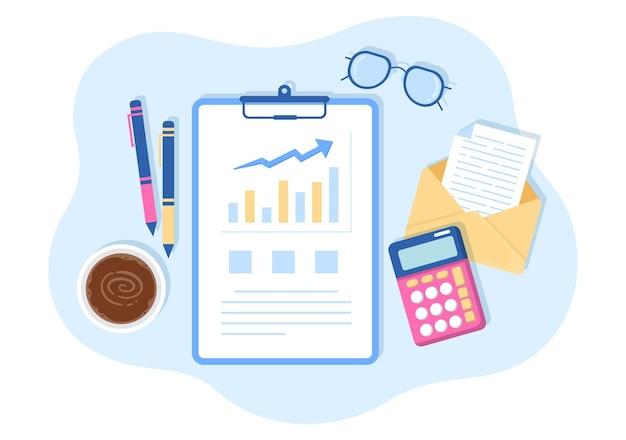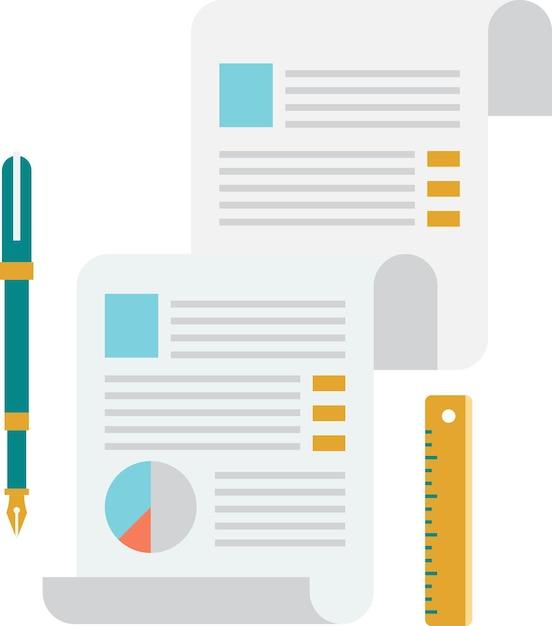In the world of accounting, source documents play a crucial role in keeping track of financial transactions. They serve as the foundation for accurate and reliable record-keeping, ensuring transparency and accountability in the financial operations of a business. So, what exactly are source documents, and why are they so important?
Source documents are the initial records that provide evidence of a financial transaction. They are the starting point in the accounting process, capturing essential details such as dates, amounts, parties involved, and the nature of the transaction. Without these documents, it would be nearly impossible to maintain accurate financial records, which are crucial for making informed business decisions and complying with legal requirements.
In this blog post, we will dive into the world of source documents in accounting. We will explore their purpose, examples, and their role in the accounting cycle. So, if you’re curious to learn more about the backbone of accounting and the documents that keep it all in order, keep reading!

What are the Source Documents in Accounting?
In the world of accounting, source documents are the foundation upon which financial records are built. These documents provide evidence of a company’s financial transactions, ensuring accuracy and accountability. Let’s delve into some commonly used source documents and explore their importance in the accounting process.
Invoices: The Paper Trail of Business Transactions
When it comes to recording sales, invoices reign supreme. These little slips of financial evidence provide a detailed account of a sale, including the name of the customer, the items purchased, quantities, prices, and any applicable taxes. By keeping track of invoices, accountants can accurately calculate revenue, track outstanding payments, and spot any discrepancies.
Purchase Orders: Making Wise Procurement Choices
Purchase orders are the written agreements between a buyer and a seller. They outline the specifics of a purchase, including the item description, quantity, price, and terms of delivery or payment. These documents enable businesses to keep track of their purchasing activities, ensure goods are received as ordered, and validate vendor invoices.
Receipts: Proof of Expense? Check!
Ah, the lowly receipt. Often crumpled at the bottom of one’s pocket or purse, this unassuming piece of paper holds great power in the accounting world. Receipts serve as evidence of an expense, allowing businesses to track their spending, reimburse employees, and claim tax deductions. So the next time you receive a receipt, remember that it’s not just trash – it’s a valuable financial record!
Payroll Records: It’s All About the Benjamins
Payroll records are crucial source documents, especially when it comes to compensating employees. Detailed records of wages, taxes, deductions, and benefits ensure that workers are paid accurately and that the company complies with legal obligations. These records also come in handy during tax season, minimizing those nail-biting moments with the IRS.
Bank Statements: The Cold, Hard Truth
Bank statements are the objective record of a company’s financial transactions. These documents reflect deposits, withdrawals, transfers, and any fees charged by the bank. By comparing bank statements with their own records, accountants ensure that the numbers add up and identify any discrepancies or fraudulent activities.
The Importance of Proper Documentation
In the world of accounting, diligent and accurate record-keeping is of the utmost importance. Source documents lay the groundwork for financial records and audits, ensuring that businesses can account for their transactions and make informed decisions. So, the next time you’re buried under a pile of paperwork, take solace in knowing that you’re an integral part of maintaining financial order!
Remember, keeping a detailed record of source documents not only ensures the accuracy of financial statements but also helps to avoid any potential trouble with the tax authorities. So, whether it’s collecting invoices or organizing receipts, make sure you have your documentation game on point. Happy accounting!
That’s it – the lowdown on source documents in accounting! These pieces of paper may seem inconspicuous at first glance, but they hold immense power in the world of finance. With diligent record-keeping and a touch of humor, you’ll be well on your way to mastering the art of accounting. Stay tuned for more accounting adventures!

FAQ: What are the Source Documents in Accounting?
What are source documents and can you give two examples
Source documents are the original records that provide evidence of a financial transaction. They are crucial for maintaining accurate and reliable accounting records. Here are two common examples of source documents:
-
Sales Invoices: These are documents issued to customers after a sale is made. They contain important details such as the date, sales amount, customer name, and product sold. Sales invoices serve as proof of the transaction and are used to record sales revenue.
-
Receipts: Receipts are provided to customers after they make a payment. They typically include information like the date, amount paid, mode of payment, and purpose of the payment. Receipts are essential for tracking and reconciling customer payments.
What is the purpose of a source document in accounting
The purpose of a source document in accounting is to establish a verifiable record of a financial transaction. Source documents serve as the foundation for accounting entries and ensure the accuracy and integrity of the financial statements. By documenting each transaction with a source document, businesses can maintain transparency, traceability, and accountability in their financial records.
What are the basic accounting procedures
Basic accounting procedures refer to the fundamental activities involved in recording financial transactions and preparing financial statements. These procedures include:
-
Recording Transactions: Source documents are used to record all financial transactions systematically. This involves identifying the accounts affected, determining the amount, and accurately documenting the transaction.
-
Classifying and Categorizing: Transactions are classified into various accounts such as assets, liabilities, equity, revenue, and expenses. This helps organize the information and facilitates the preparation of financial statements.
-
Summarizing: Account balances are summarized periodically to provide a snapshot of the financial position and performance of the business. This is done through trial balances, financial statements, and other reporting tools.
-
Analyzing and Interpreting: Financial statements are analyzed to gain insights into the financial health of the business. Ratios, trends, and comparisons are used for performance evaluation, decision-making, and forecasting.
Why is accounting considered a process
Accounting is considered a process because it involves a series of steps and activities that are interconnected and need to be followed in a specific order. It is not a one-time event but an ongoing cycle that continuously gathers, records, and analyzes financial information. This process ensures accurate reporting, compliance with legal requirements, and informed decision-making.
What are the source documents in accounting
Source documents in accounting are the original records that provide evidence of financial transactions. They can take various forms, including:
- Invoices
- Receipts
- Bank statements
- Purchase orders
- Contracts
- Payroll records
- Sales orders
These source documents are used as references when recording transactions and preparing financial statements.
What are the eight steps in the accounting cycle
The eight steps in the accounting cycle are:
-
Identify and Analyze Transactions: Review and understand the nature and impact of each transaction on the financial statements.
-
Record Transactions: Enter transaction details into the appropriate accounts using journal entries.
-
Post to the General Ledger: Transfer the journal entry information to the respective accounts in the general ledger.
-
Prepare a Trial Balance: Summarize all the account balances to ensure they are in balance and identify any discrepancies.
-
Adjusting Entries: Make necessary adjustments for accruals, deferrals, depreciation, and other adjustments at the end of the accounting period.
-
Prepare Financial Statements: Use the adjusted trial balance to prepare income statements, balance sheets, and cash flow statements.
-
Closing Entries: Close temporary accounts (revenue, expense, and dividends) to retained earnings and prepare the accounts for the next accounting period.
-
Post-Closing Trial Balance: Verify that all temporary accounts have been closed and the post-closing trial balance is in balance.
What are the four phases of accounting
The four phases of accounting are:
-
Recording: This phase involves capturing and documenting financial transactions in chronological order using source documents.
-
Classifying: Transactions are categorized into appropriate accounts based on their nature, such as assets, liabilities, equity, revenue, and expenses.
-
Summarizing: Account balances are periodically summarized and aggregated to create financial statements, including the income statement and balance sheet.
-
Interpreting: In this final phase, financial statements are analyzed and interpreted to assess the financial performance, financial position, and cash flows of the business. This information helps stakeholders make informed decisions.
Is the trial balance a source document
No, the trial balance is not a source document. A trial balance is a summary of all the account balances in the general ledger, which is prepared to ensure that debits equal credits. It helps identify any errors or discrepancies in the recording of transactions but does not serve as a source document itself.
What are examples of source documents in accounting
Source documents in accounting can include a variety of records that provide evidence of transactions. Some examples of source documents include:
- Sales invoices
- Receipts
- Purchase orders
- Bank deposit slips
- Contracts
- Time cards
- Expense reports
These source documents serve as reliable evidence when recording transactions and preparing financial statements.
Remember, accurate and organized source documents are the backbone of a robust accounting system. By diligently maintaining these records, businesses can ensure transparency, compliance, and effective financial management. Happy accounting!
Sources:
– Investopedia
– Accounting Explained
